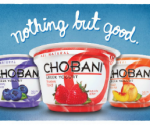10 Free Data Visualization Tools
In my day to day role I often need to create a graph, chart or table to simplify what can sometimes be a lot of data into a salient point or to tell a story. Here are 10 free data visualizations tools; some provide the metrics, whilst the others highlight relationships between data, as well as displaying the information in a visual, understandable and digestible way. Although, a couple are in beta, you may find them useful for that pitch, presentation or assignment.
1. Forrester’s Consumer Profile Tool
Forrester’s Social Technographic classifies consumers into six overlapping levels of social media participation. Based on Forrester survey data you can see how participation varies among different groups of consumers. The great thing about this tool is that it allows you to enter the basic details of your target audience — age, gender, country — and within seconds it enables you to find out whether those people tend to be social media creators, critics, collectors, joiners, spectators, or inactives.
2. Google Insights
Google Insights remains a mainstay tool that allows you to discover the volume of Google search terms around an issue, then plots the data into a graph and provides links to relevant news stories which may explain search spikes. The tool allows you to enter up to five keywords, locations or time ranges and provides a visual representation of regional interest on a country’s map. It also displays top searches and rising searches that may help with keyword research.
3. Global Web Index
In similar vein to Forrester’s Social Technographic Tool, the Global Web Index brought to us by Trend Stream is one of the new generation data visualization tools that allows user to have personalised data put into a graphic and embedded elsewhere. This tool enables users to look at the social media profiles of various online users by country, gender, age and attitude – allowing you to discover their motivations online. Essentially, it’s an interactive infographic and well worth checking out.
4. Gary Hayes’ Social Media counter
This is a fantastic real time counter which documents the exponential growth of social media. It is regularly updated by Gary Hayes and is great for initiating conversation about why brands should use social media.
5. Google Public Data Explorer
The Google Public Data Explorer makes large datasets easy to explore, visualise and communicate. As the charts and maps animate over time, the changes in the world become easier to understand. Google Public Data Explorer is still very much in beta testing and in the future I expect to see more data sets included. Nonetheless, it remains a good tool with vast potential.
6. Wordle
Wordle is a pet project of Jonathan Feinberg, a computer whizz at IBM. This tool is a tag cloud generator, which is basically a visual representation of the frequency of words appearing in a passage of text, URL, RSS or Delicious feed. It perhaps sounds more complicated than it actually is. Either way, it is well worth playing around with Wordle – it is ideal for showing a lot not of non-numerical data to a client in an easily digestible format.
7. Social Collider
I’ve had mixed experiences with Social Collider. When it works, it is simply brilliant, but there have been some computer-crashingly bad moments. Nonetheless, when it’s functioning the software reveals cross-connections between conversations on Twitter – which is ideal for monitoring potential viral activity, issues and launches. The beauty of Social Collider is that you are able to identify connections between networks of people – a valuable component of the social media planning stage.
8. Open Heat Map
This is a fantastic open-source tool by former Apple employee, Pete Warden. Open Heat Map combines the inputs of numerical data, location and changes over time into a brilliant graphical visualization. The Guardian frequently use this tool and maps are a wonderfully simple way to tell a complex and evolving story. In addition, Open Heat Map enables you to drill down into quite granular detail by looking at countries, states, counties, post codes and IP addresses. Check out Pete’s ‘How to’ vid for more information.
9. Micrsoft Pivot Viewer
Microsoft Pivot Viewer has the potential to be an amazing tool. It displays massive amounts of visual data into ‘Collections’ that users can easily interact with. The rationale is that by visualizing thousands of related items at once, people will be able to identify trends, patterns and relationships that would otherwise be hidden. Pivot Viewer is still very much in development, but it could make a huge impact on how data is visually represented in the future.
Update: Sadly Microsoft Pivot Viewer has been retired from service. Nonetheless, I’m sure Microsoft will be able to use this astounding technology in future projects.
10. Twitscoop
Twitscoop is best employed as a real-time trend tracker to monitor what themes are emerging on Twitter. Its algorithm identifies tags and keywords and then ranks the words by how frequently they appear in comparison to regular usage. Not only is Twitscoop great for monitoring, but it provides useful data, such as graphs depicting Tweet volume over time.
Below is a presentation deck of this post, as always I’d be interested to hear what data visualization tools you use and recommend.

















[…] This post was mentioned on Twitter by Ben Cotton, UX Feeder. UX Feeder said: Delicious: 10 Free Data Visualization Tools « Social Web Thing: http://bit.ly/cAWOrU [Research] […]
[…] 10 Free Data Visualization Tools « Social Web Thing […]
[…] 10 Free Data Visualization Tools « Social Web Thing (tags: visualization data tools) […]
GrapeCity ActiveAnalysis for .NET and Silverlight OLAP, Data Visualization and BI comes with full-featured Stand-alone Viewer Applications, with full source code that you can use to generate data visualizations without the need to write your own code.
The product itself is a programmable component that is FREE to try and in fact, once you embed the component on your form, you get out of the box features without the need to write any code yourself.
http://www.datadynamics.com/activeanalysis
Thanks for the heads up, Sanjeev.
I’ll have a play around with GrapeCity and let you know what I think.
Thanks,
Ben
[…] Originally posted on Social Web Thing. […]